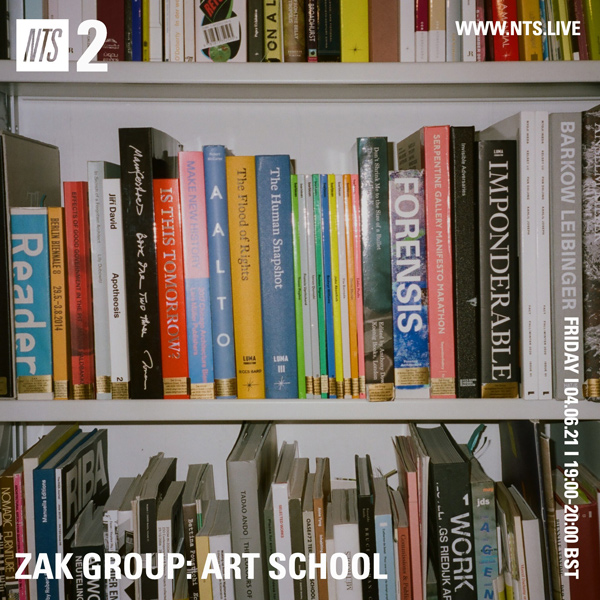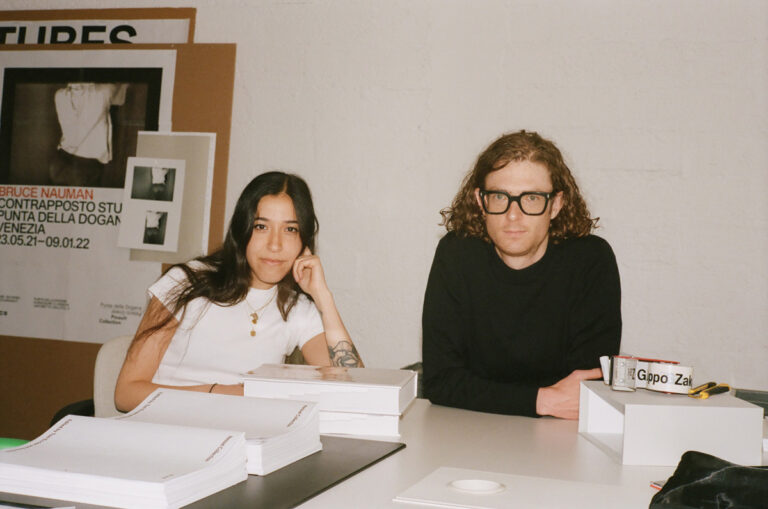What do visual artists trying their hand at music sound like? Tune in to NTS tonight to find out
Did you know that Bruce Nauman, famous for his neon signage art, also experimented with music? What about Jean Michel Basquiat, Jeremy Deller, and even Wolfgang Tillmans—ever heard about them trying their hand at music? Chances are, you had no idea, and I’ve now got your attention.
Internationally acclaimed design studio Zak Group is launching a new radio show titled Art School tonight, 4 June, on NTS radio. With an introduction by Hans Ulrich Obrist, the one-off programme will present an eclectic playlist of tracks by some of the most celebrated visual artists of our time including Bruce Nauman, Anne Imhof, Jean Michel Basquiat, Pipilotti Rist, Jeremy Deller, Wolfgang Tillmans, Holly Herndon, Arthur Jafa and Kahlil Joseph among others.

Screen Shot spoke to Zak Kyes, founder and creative director of Zak Group, about the upcoming show and the message it aims to deliver. In case you’ve never heard of Zak Group before, the design practice is known and celebrated for its influence on contemporary visual cultures, creating brand identities and digital platforms at the intersection of art, architecture, design, fashion and entertainment.
Remember when Virgil Abloh made waves recently for his book ICONS, which chronicles the making of ‘The Ten’, Abloh’s infamous (and extensive) collaboration with Nike on iconic trainers? Guess who worked with Abloh on the book’s design? Zak Group. Other recent commissions also include identities for Fact and art direction for Anne Imhof and Paco Rabanne.
When asked what first inspired him to curate Art School and how he went about selecting the artists featured in the ‘line-up’, Kyes explained, “We work with lots of amazing visual artists and many of them also make music. That inspired us to try and create an hour of radio by artists that make music.”
While some artists formed groups while they were still in art school, “like Mike Kelly or Cosey Fanni Tutti,” Kyes told me, for others, like Anne Imhof or Arthur Jafa, “music is one aspect of a multidisciplinary practice,” he further explained. “We’ve included a few previously unreleased tracks, experimental sound pieces and video soundtracks. It’s a dream line-up of artists. Some we’ve met and others we studied.”
If you’re still unsure exactly what Art School will bring you in terms of experience, Kyes pretty much summed it up: “Listenable? Not always. Surprising? Definitely.” The aim of the radio show is to learn from artists and how they connect ideas and disciplines—like art and music. But it’s also to have fun and encourage an ‘art school mentality’. “For us, that’s a random, exploratory, ‘what if’ mode of thinking. Everybody should go to art school,” Kyes shared.
And what better radio to host an experimental show featuring an impressive line-up of multidisciplinary artists than NTS, right? “NTS is a cultural institution, so that made it an obvious choice for Zak Group Art School. We’re also fans and supporters and we love the community that NTS supports. It’s experimental and crosses disciplines and that’s something that resonates with our work.”
So, if you’re looking to expand both your artistic and musical knowledge, tune in to NTS tonight at 7:00 p.m. BST for the full show. But before I leave you to prepare for your exploration of the creative worlds, I simply had to ask Kyes what Zak Group’s go-to NTS show is. “It has to be the Do!! You!!! Breakfast Show with Charlie Bones. It’s been on our speakers every morning for as long as we can remember—it’s our ritual,” he told me.
Surprising? Not really. Listenable? Always!






